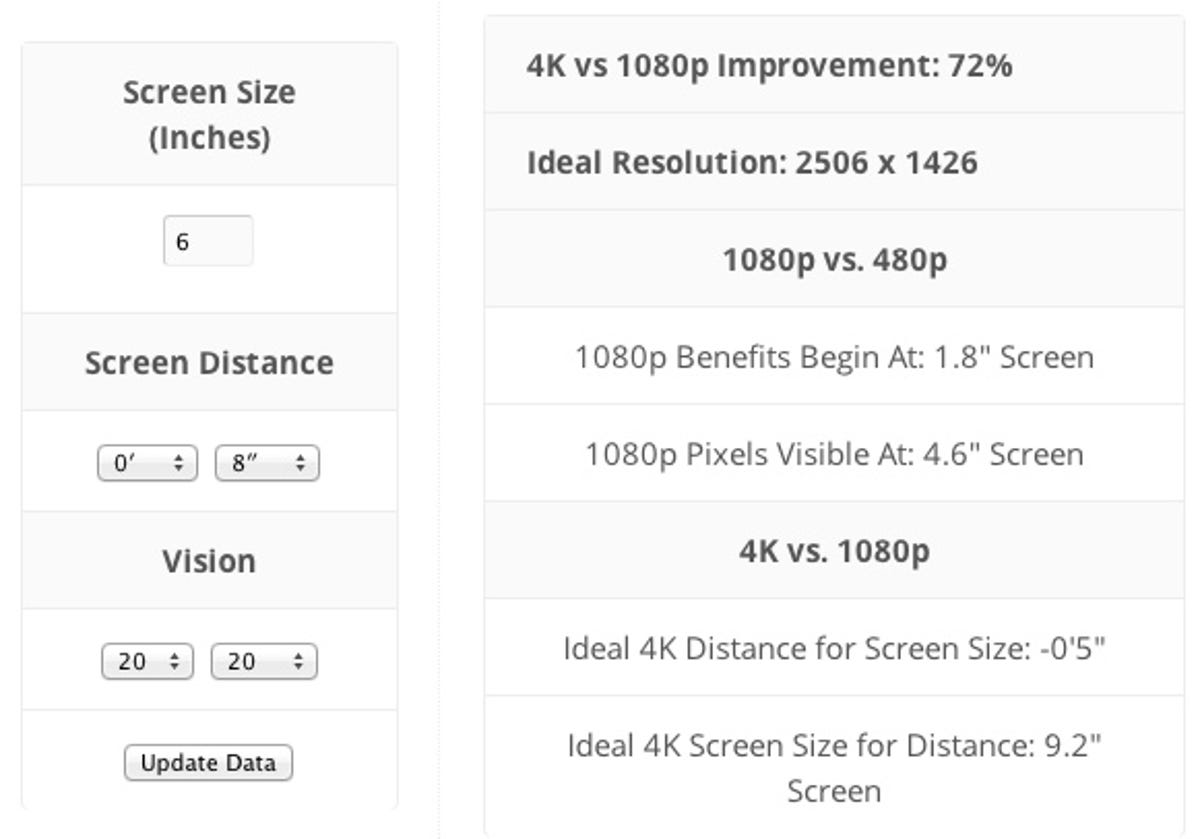Like it or not, the forthcoming Samsung Galaxy S5 is set to usher in the era of ultra HD smartphone screens.
The Galaxy S5 won’t be the first mobile handset to showcase a 2,560×1,440-pixel resolution — that honor belongs to the Vivo Xplay 3S — but it will be the handset that draws the most attention, at least initially. And part of that conversation will revolve around just how necessary, even useful, it is to top a phone with a screen resolution so high.
Apple has long stood by the 326ppi pixel density of its Retina Display as the optimal pixel density for a smartphone screen, the point beyond which the naked eye can’t meaningfully tell the difference among higher resolutions. It is a logical stance based on 20/20 vision, and it’s a similar premise used by optometrists when testing your eyes.
Related stories
- What we know about Samsung’s Galaxy S5
- The first 2K smartphone is already here
- Samsung already looking beyond 2K display
This very real argument of diminished visual returns is the same reason that CNET TV guru David Katzmaier counsels buyers to avoid a 4K TV. Unless you’re sitting close enough, extreme detail and nuances will be lost on you, and you’ll wind up buying more image than you can really appreciate.
So, are smartphones that feature first 2K-through-4K resolutions giving you more visual complexity than you can really take in? The answer is that it depends on the size of the screen and how far you hold it from your face.
Unlike TVs, smartphones are handheld devices that are used for reading as much as they are for image-viewing. Since you typically view them at a much closer distance than a TV, and even a tablet, you can distinguish finer details like large swaths of tiny text and HD images.
Supersize me: Giants of the smartphone world (pictures)






+20 more
The upward creep of ever-larger smartphone screens also means that there’s much more room than before for eyeballing content up close. A 5.7-inch, 6-inch, or even 6.3-inch smartphone has a much vaster area for viewing the full desktop version of Web sites without making you squint, zoom in, or resort to mobile-optimized layouts.
Display resolution on larger-screen phones makes a huge difference. The 720p HD resolution on Samsung’s 6.3-inch Galaxy Mega (206ppi) is noticeably fuzzier than, say, the much higher definition Samsung Galaxy Note 3, with a pixel density of 386ppi. In contrast, a 2K ultra-HD display on that Mega would get you a pixel density of 466ppi on that 6.3-inch screen.
There is a limit to how much you benefit from increased resolution, based on the size of the screen and how far away you hold the device from your face. CNET’s Katzmaier uses this handy 4K calculator as a reference for 4K TVs, but it also applies to phones when you adjust the dimensions. It calculates a percentage benefit in viewing 4K over 1080p. The smaller the percentage benefit, the less your eyes will be able to naturally detect a difference.


Screenshot by Jessica Dolcourt/CNET
In the above scenario, I posited a 6-inch screen held at about 8 inches from one’s face. The results calculated a 72 percent improvement in optics over 1080p HD, with an ideal resolution that’s just about the 2,560×1,440 pixels we’ll start seeing on a lot of phones. That’s a pretty strong benefit, according to this calculation — but it’s your peepers you’ll ultimately have to please most.
At the end of the day, the improvement in display resolution may not always be obvious unless or until you hold high-res smartphones side-by-side, but there is a case for ultra HD displays to boost the visible detail on smartphones with the largest screens.



